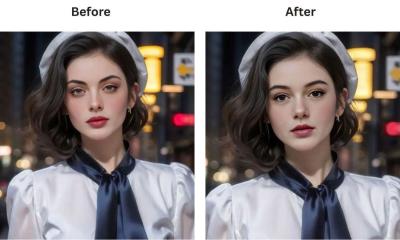LinkedIn is more than just a professional social network; it’s a powerful tool for building relationships and expanding your career opportunities. One of the core features of LinkedIn is its connection system, which categorizes your relationships into different levels. Understanding these connections can significantly enhance your networking strategy. Whether you’re job hunting, seeking clients, or looking to engage with industry experts, knowing the difference between 1st, 2nd, and 3rd connections will help you navigate your
What are 1st Connections?
In the LinkedIn world, your 1st connections are your immediate contacts. These are individuals whom you have accepted connection requests from or who have accepted yours. Essentially, they reside right within your professional circle. Connecting with someone on LinkedIn makes it easier to engage, share updates, and keep each other informed about professional happenings.
Here are some key characteristics of 1st connections:
- Direct Access: You can send them direct messages, which is crucial for effective communication.
- Mutual Visibility: Both you and your 1st connections can see each other's shared posts and updates, fostering a deeper relationship.
- Expanded Network: Your 1st connections can introduce you to their 2nd connections, broadening your network.
Building a diverse and engaged group of 1st connections is essential for leveraging LinkedIn’s potential. Here’s a simple table to illustrate how 1st connections fit into the overall LinkedIn connection structure:
| Type of Connection | Definition | Connection Level |
|---|---|---|
| 1st Connections | People you are directly connected with | Immediate Circle |
| 2nd Connections | Friends of your 1st connections | Extended Circle |
| 3rd Connections | Friends of your 2nd connections | Broader Network |
So, whether you’re connecting with a former colleague or someone you met at a networking event, remember that nurturing your 1st connections can lead to exciting opportunities in your professional journey!
The Importance of 2nd Connections
When it comes to LinkedIn, 2nd connections are a treasure trove of networking opportunities. You might be wondering why they matter so much. Well, here’s the scoop!
2nd connections are people who are connected to your 1st connections. Essentially, if you picture a web, your 1st connections are the immediate strands, and 2nd connections are the strands branching out from those. Here’s why they’re important:
- Expanding Your Network: 2nd connections are the doorway to new opportunities. You might not know them directly, but a simple introduction from a mutual connection can be a game-changer.
- Industry Insights: By connecting with your 2nd connections, you gain access to diverse perspectives and expertise. This can lead to valuable insights and trends in your field.
- Leveraging Introductions: Don’t hesitate to ask your 1st connections for introductions. Most people are willing to help you connect when you show genuine interest.
- Broader Job Opportunities: Many job postings are filled through referrals. Engaging with your 2nd connections may just lead you to your dream job!
In summary, 2nd connections can significantly widen your professional horizons. Reach out, engage, and watch your network flourish!
Understanding 3rd Connections
Now, let’s dive into 3rd connections. If you thought 2nd connections were a bit distant, brace yourself—3rd connections are those individuals who are connected to your 2nd connections, making them two steps removed from you.
While you won't have direct access to these individuals, understanding their significance is key to maximizing your LinkedIn strategy:
- Potential Networking Goldmines: Just because they’re two degrees away doesn’t mean you can't benefit from knowing them. 3rd connections can introduce you to opportunities you might never have discovered on your own.
- Greater Reach: If you are trying to expand into new industries or roles, interacting with 3rd connections can help you tap into sectors outside your current network.
- Research Opportunities: Want to learn more about a company or industry? Check out the profiles of your 3rd connections. They might provide insights that could aid your research.
- Engagement Strategies: While you can't connect directly, don't hesitate to engage with their content. Commenting on their posts can open doorways for a future connection.
In summary, while 3rd connections might feel a bit far-off, they hold valuable potential. Approach them with curiosity and engagement, and you might be surprised by what comes next!
How to Manage Your Connections
Managing your connections on LinkedIn can be a game changer for your professional networking experience. After all, your connections are more than just a list of names; they are potential collaborators, mentors, and even friends! So how do you keep your connections organized and productive?
Here are some tips to effectively manage your LinkedIn connections:
- Regularly Review Your Network: Take time to browse through your connections occasionally. It helps to refresh your memory about who you know and how they can be valuable to you.
- Engage With Your Connections: Don't let your connections gather digital dust! Like, comment, or share their posts to maintain engagement. This keeps you on their radar and fosters relationships.
- Categorize Your Connections: Consider creating tags or notes on LinkedIn to categorize your connections based on their industry, how you met, or areas of expertise.
- Leverage Connection Introductions: Don't hesitate to ask mutual connections for introductions to people you're interested in connecting with. A warm introduction can go a long way!
- Clean Up Your Network: Occasionally, review your connections and remove those that no longer serve your goals. This could be where a connection hasn’t engaged with you in years or doesn’t align with your current professional objectives.
By following these strategies, you'll not only manage your connections more effectively but also enrich your networking experience on LinkedIn!
Best Practices for Networking on LinkedIn
Networking on LinkedIn is not just about collecting connections; it's about building meaningful relationships. Here are some best practices to maximize your networking efforts:
- Personalize Connection Requests: Always send a personalized message with your connection requests. Mention how you know the person or why you would like to connect. This small touch can make a big difference!
- Be Active and Consistent: Post content regularly that showcases your expertise and interests. This keeps your audience engaged and attracts potential connections to your profile.
- Join Relevant Groups: Participating in LinkedIn groups related to your industry can help you connect with like-minded professionals and expand your network organically.
- Follow Up: After connecting, don’t forget to follow up with your new connections. A simple thank-you message or a question can start a conversation!
- Offer Value: Always look for ways to provide value to your connections. It could be sharing insights, articles, or even offering to help with a challenge they're facing.
In essence, networking should be a two-way street. By implementing these best practices, you’ll create a more engaging, authentic, and successful LinkedIn networking experience!
Understanding 1st, 2nd, and 3rd Connections on LinkedIn
LinkedIn is a powerful networking platform that allows professionals to connect and engage with others in their industry. Understanding the hierarchy of connections on LinkedIn—1st, 2nd, and 3rd connections—is key to leveraging the platform effectively.
1st Connections: These are people you have directly connected with on LinkedIn. You have accepted their connection request or they have accepted yours. You can directly message your 1st connections without any limitations. This relationship can foster open communication and collaboration within your professional network.
2nd Connections: 2nd connections are the connections of your 1st connections. You may not have met these individuals personally, but you have mutual connections. You can send them a connection request or message them through an InMail, provided you have a premium account. This tier allows you to expand your network further by gaining introductions through your existing connections.
3rd Connections: These are individuals who are connected to your 2nd connections but not to you. 3rd connections are further removed and typically require you to connect via a common contact or send an InMail to reach out. While they may not be part of your immediate network, these connections can still provide valuable opportunities if approached properly.
| Connection Type | Description | Direct Messaging |
|---|---|---|
| 1st Connections | People you are directly connected to | Yes |
| 2nd Connections | The connections of your 1st connections | Limited (via InMail or request) |
| 3rd Connections | The connections of your 2nd connections | Limited (via InMail) |
By understanding these connection types, you can navigate LinkedIn more strategically, ensuring meaningful engagement with your network and an increased potential for professional opportunities.
Conclusion: Maximizing your LinkedIn connections involves recognizing the significance of each connection level, nurturing your 1st connections, strategically leveraging your 2nd connections, and proactively reaching out to 3rd connections while maintaining authenticity in your professional interactions.
 admin
admin








